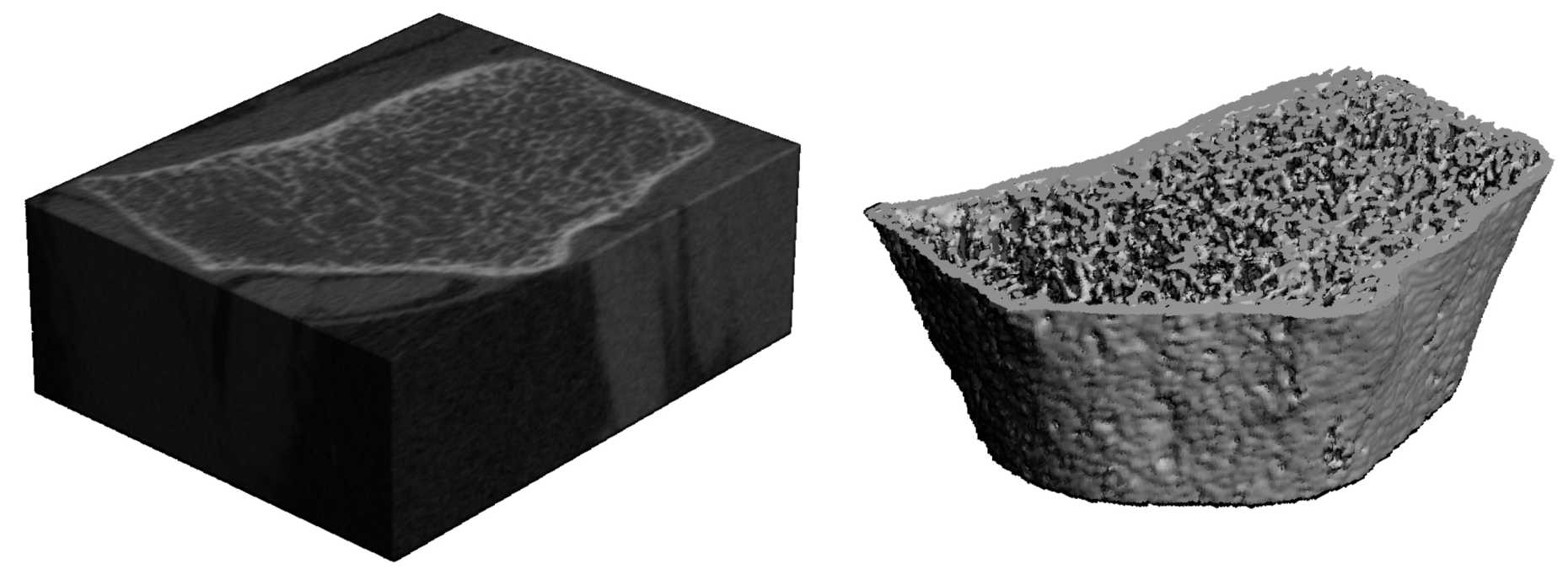In Silico Bone Health Prognosis
Our research focuses on the development of novel ingenious computational engineering methods to investigate the biology and mechanics of bone health and disease with the ultimate aim of in silico prognosis of bone health in patients. In silico prognosis uses computer simulations to predict medical outcomes months, years and even decades before the actual event and would allow, for example, simulating the effects of certain treatment options virtually in the patient. These simulations use in vivo images of the bone on the microstructural level providing unprecedented resolutions of around 50 micrometres, which is half the size of a hair, to look “inside” the bone. These models therefore allow to investigate bone biology close to cellular resolution and provide accurate prediction of the mechanical milieu around cells.
Several large-scale computational models for biological processes and mechanical properties of bone health and disease already exist, but to model the effects of treatments on bone in more detail, they need to be merged, extended, and compared to in vivo patient measurements. Additionally, current approaches for the modelling of biological pathways rely on many parameters and variables that are not known and cannot be measured, not even in animal models and certainly not in a patient. Even more so, simulation methods that integrate varied clinical data are still missing although they would be required to understand and predict the development of complex disease.
Specifically, one of the aims is thus to approach this problem and model bone biology in a discrete manner with so called Boolean network models that allow modelling pathways and simulate alterations within them without the knowledge of missing parameters and variables, and combine them with existing models for mechanical calculations in a unifying in silico bone framework. This involves new theoretical developments and computational implementations followed by a further aim, which will be the comparison of in silico simulation results with in vivo longitudinal measurements in patients. Such comparisons with clinical data are still lacking at this level but are essential for in silico simulations to be accepted for clinical prognosis.
Collaborators
Prof. Chun-Yiu Jack Cheng and Dr. Yuk-Wai Wayne Lee, The Chinese University of Hong Kong, China.
Prof. Peter Arbenz, ETH Zurich, Switzerland.
Acknowledgments
I gratefully acknowledge funding from the Holcim Stiftung for the Advancement of Scientific Research and computing time from the Swiss National Supercomputing Centre (CSCS).
Journal articles
Christen, P. et al. 2016 external page Voxel size dependency, reproducibility and sensitivity of an in vivo bone loading estimation algorithm. Journal of the Royal Society Interface / the Royal Society 13, 20150991. (doi:10.1098/rsif.2015.0991)
Badilatti, S. D., Christen, P., Levchuk, A., Marangalou, J. H., van Rietbergen, B., Parkinson, I. & Müller, R. 2016 external page Large-scale microstructural simulation of load-adaptive bone remodeling in whole human vertebrae. Biomechanics and Modeling in Mechanobiology 15, 83–95. (doi:10.1007/s10237-015-0715-8)
Christen, P., Ito, K., Ellouz, R., Boutroy, S., Sornay-Rendu, E., Chapurlat, R. D. & van Rietbergen, B. 2014 external page Bone remodelling in humans is load-driven but not lazy. Nature Communications 5. (doi:10.1038/ncomms5855)
